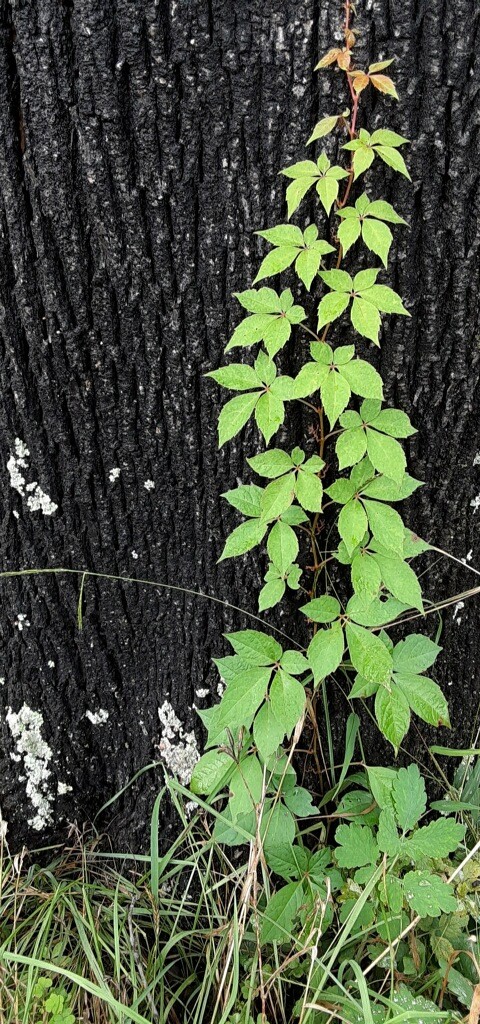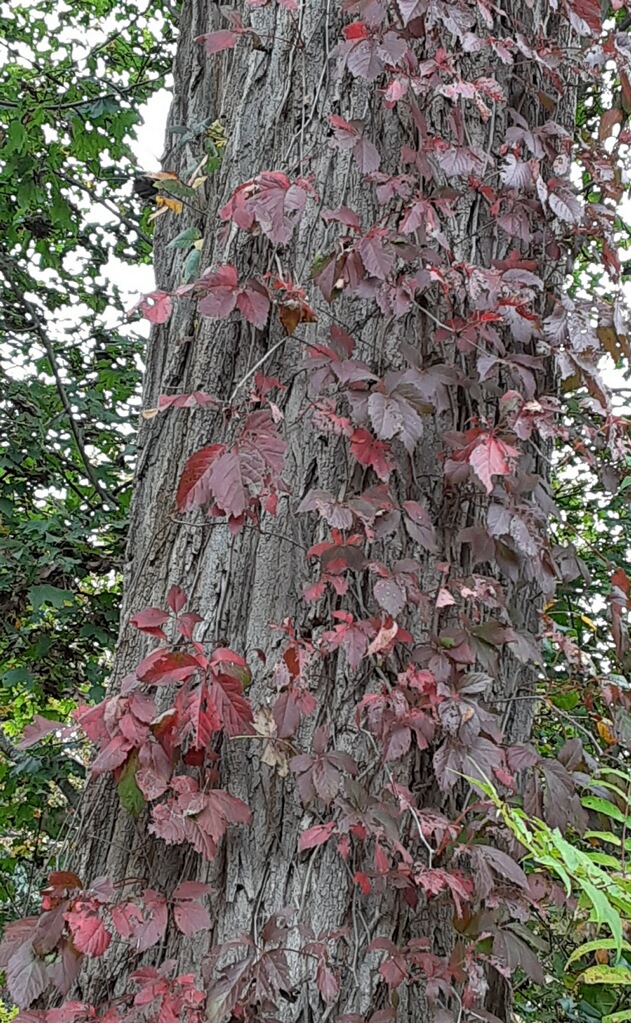By Susan Sprout
Virginia Creeper is a native, woody vine belonging to the VITACEAE, or Grape Family. Surprised?
You have probably seen many of them clinging to the sides of trees. They are versatile, growing in any kind of soil, partial shade to full sun, in fields, woods, or flood plains, from Maine to Florida. Virginia Creepers are good cover for erosion control as they…well…”creep” along on the ground. But, if there are trees around, up they go, growing to fifty feet in a year.

Their leaves are compound, made up of five, coarsely-toothed, six-inch leaflets that meet in the middle resembling fingers spread out on the palm of a hand. Small white flowers blooming in late spring may be difficult to see among the leaves. Fleshy, purple berries grow from the pollinated flowers and hang on red stems in branching clusters, remaining hidden until after their bright red to purple autumn leaves fall.

How do Virginia Creepers hold on to the trees as they climb? The answer to this question is a clue to their identification. They have many branched tendrils with adhesive disks or holdfasts produced on the plants’ stems opposite from the leaves. I carefully removed a piece of stem to investigate and found the tiny, three-sixteenth of an inch disks pushed down in the cracks and craters of tree bark in such a way, they were difficult to pull off. There were eight small disks on the tendrils, and with them came small hunks of bark. I read somewhere that allowing Virginia Creeper to grow up the side of a house can ruin painted surfaces, damage stucco, and the mortar between bricks. Those holdfasts are small, but mighty. Before checking out this feature for yourself, make sure the plant you are examining has five leaflets per leaf. Poison Ivy of “leaves of three, let them be” fame are climbers, too. Their holdfasts are more like hairy rootlets, however.
And just because Virginia Creeper is a member of the Grape Family, don’t think that you can eat the berries or leaves. You cannot – they are toxic, containing calcium oxalate crystals. Let them for twelve species of songbirds, squirrels, raccoons, opossums, and skunks to eat!


